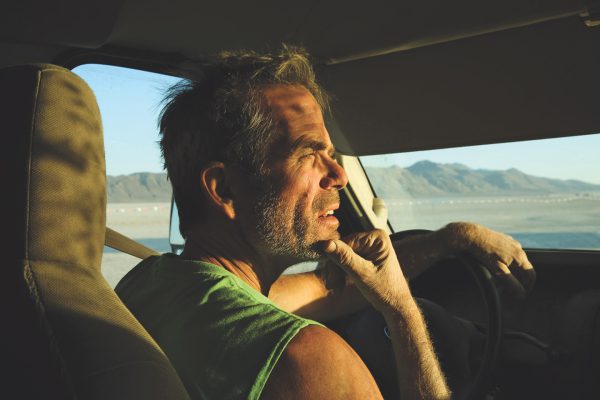
So long, summer. Hello, sea of yard signs. It’s election season and the pyrotechnics have begun. In one corner we have incumbent pugilist Peter Blake, frothing at the canines, relishing every moment to play the antichrist, shouting down the crowds he disdains as “activists.” You know, those people who ended slavery, fought for civil and women’s rights, and got us out of Vietnam? Yep, those deplorables!
I’m not sure Peter understands what activism means, owing to his short political life. But in this case, obstructionists might be a better description, since his adversaries oppose every single new idea reflexively, and now want to hijack decision-making away from our elected officials with their dopey and incomprehensible BLOZD (Businesses Leave Overnight Zoning District) Ballot Measure Q. It’s much ado about nothing, except its diverting attention away from real issues that matter—like the problem that ranks highest every year in citizen polls: traffic. We’ve known this for decades and haven’t changed a thing. People still drive too fast, pedestrians and bikers still get killed, our quality of life suffers, and we continue to poison the planet.
For my tax dollars, I want to know which candidates are thinking about a city designed for people, not cars. And how they would remake Laguna Canyon Road, Coast Highway, and Glenneyre Street to calm traffic and make cars less invasive. And how we can create more community-focused public places in and around town that are easily accessible by bike, transit and foot. It takes years of hard work to reimagine a city, and the really smart ones started decades ago.
In 2016, Oslo, a city 30 times larger than us, had no pedestrian or biker deaths. They made it safer, cleaner and quieter by reducing parking downtown and imposing a congestion toll on cars, forcing people to ditch them and switch to a network of clean, quiet transit options.
So instead of relitigating the 30-unit artist live/work, let’s move on and reimagine Laguna Canyon Road to be a pedestrian-friendly corridor where people walk, there are places to sit and hang out, and even retail services like cafes and markets. A real neighborhood for people, not powerline pinball for distracted drivers. And of course, it starts with a dedicated bike and express transit lane when we take down the power lines (to save lives), and widen the road. A must!
While we’re at it, let’s put a real, dedicated bike lane on lower Glenneyre, from downtown to Calliope Street, a bike network connector to our neighborhoods. This is exactly what is recommended in the 2015 Enhanced Mobility and Complete Streets Transition Plan, an exhaustive blueprint on how to reimagine our traffic grid and mobility for the future that is now somehow mothballed into oblivion (like so many of our visionary studies).
Removing a lane would only be necessary for two short blocks—from Park Ave to Cleo St. After that we could simply remove the 14 parking spaces on the east side to Thalia, and replace it with a dedicated bike lane. Then we’d have a safe southern route into and out of downtown, much like Monterrey in North Laguna.
Even with shrunken lanes, traffic studies have concluded that Glenneyre would flow better because we’ll install those innovative roundabouts that also reduce the pollution caused by brake pads and exhaust while idling. Not only should we consider them for Glenneyre (where they were originally envisioned when we successfully tested a single roundabout 10 years ago at the five-way neighborhood intersection at El Bosque), but also at strategic bottlenecks on Laguna Canyon Road including those at El Toro and 3rd Street. They work, folks. It’s time.
Like most things, there’s an easy and cheap way to test all these concepts—paint and planters. We can temporarily remove parking and/or lanes and test the results. If nothing positive is achieved, then put them back.
Finally, there’s the grand dame of alternating gridlock, velocity, and death: Coast Highway. What is now largely a pass-through for addled motorists needs to be reimagined. If we take control from CalTrans, we can slow traffic down and create an extension of Forest Avenue from downtown to Legion Street with the shrinking of lanes. Then widen the sidewalks for pedestrians and outdoor dining, add an express trolley lane down the middle, and boom, you have a beautiful downtown village extension that simultaneously slows cars down and makes us safer. We could do the same in North Laguna, the HIP District and South Laguna—little pedestrian areas to create a village atmosphere. The benefits are innumerable. It signifies you are in a town and not on a highway. Commuters in a hurry will opt for the Toll Road or 405. Win!
And finally, why not a congestion tax on cars that come downtown to park (residents and merchants excepted) like New York City is considering? All of these would fall under a comprehensive, sustainable mobility plan. We would be building a future we can all be proud of—one that will lessen the burden of cars, make our town cleaner, quieter, safer, and easier to navigate and make Laguna the carbon-neutral city we desperately need to be.
What candidate has the bandwidth, desire, and vision to tackle these issues, who understands policy, funding sources, and how to get things done? Someone who doesn’t speak in platitudes but in strategy. Who is thinking about a better Laguna for generations to come? I’m listening. I hope you are too.
Billy hosts Laguna Talks on Thursday nights on KXFM radio. He’s also the CEO of La Vida Laguna, an E-bike and ocean sports tour company. Email: [email protected].





Billy, I really like your idea of PCH modifications and congestion tax! Too bad our current city council will not consider it. You should run for city council at some point and push your ideas forward. I am sure they will gather a lot of support.